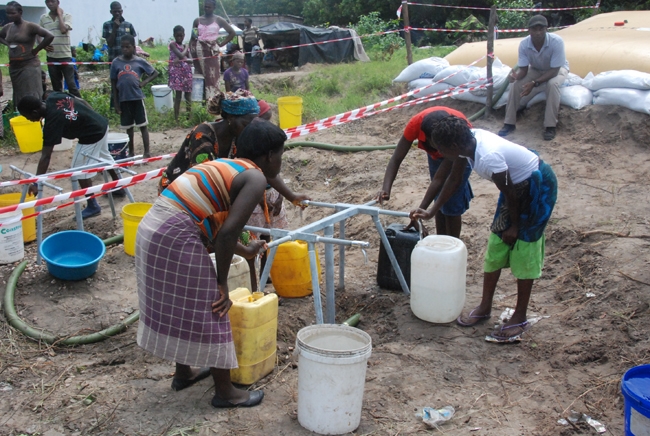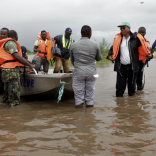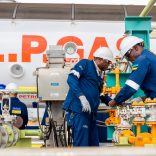Maputo Province: Over 290 Mozambicans repatriated from South Africa await return to areas of origin
Restrictions on Greater Maputo water supply to continue

RM (File photo)
Mozambique’s Minister of Public Works, Carlos Bonete, told reporters on Wednesday that restrictions on the supply of water to the Greater Maputo area must continue until water production at the treatment and pumping station is normalised.
Speaking during a session of the Coordinating Council of his Ministry at Mulotana, in Maputo province, Bonete pointed out that the situation at the Pequenos Libombos dam, on the Umbeluzi river, some 40 kilometres west of the capital, is still a matter for serious concern.
The reservoir at the dam is the source of the water used at the Umbeluzi pumping station. When the level of the reservoir fell to less than 13 per cent in early January, the Maputo Regional Water Company (AdeM) imposed a system of rationing. Water was only pumped to each neighbourhood in Maputo and Matola cities and Boane district every other day.
As the rainy season continued, there was some rainfall in the Umbeluzi basin, and the level of the reservoir rose, but remained at well below normal levels.
The forecast for the next rainy season, which begins in October, is that rainfall in this part of the country will be normal to below normal – hence Bonete’s ministry fears that the greater Maputo region could be facing a period of continuing water shortages.
“This remains a concern of the government”, he said, “bearing in mind the level of water storage at the Pequenos Libombos. So restrictions on supply will continue until the situation is normalised”. Bonete repeated his appeal to citizens not to waste water.
Meanwhile, emergency efforts are under way to drill more boreholes in Maputo and the surrounding areas. To diversify water sources, 46 new boreholes are being opened, and 22 small scale water systems are being repaired and rehabilitated.
For the longer term, Bonete said, the government has begun work on a pipeline that will carry water from the Corumana dam, on the Sabie river, to the Machava distribution centre in Matola.
“This pipeline is not, in itself, the solution”, he warned. “Addition work is needed on the treatment station and on pumping stations, which must begin as from next year”.
Since the current government took office, in January 2015, about 1,200 water sources, equipped with hand pumps, have been built or rehabilitated throughout the country, Bonete said. This means that the supply of clean drinking water now reaches about 45 per cent of the population in the rural areas and 75 per cent in the urban areas.
The government’s target is to raise this coverage to 50 per cent in the countryside and 80 per cent in the rural areas, by the end of its five year term of office (2015-2019).
“We are half way through the five year period”, said Bonete. “We are bringing you the numbers on what we have been able to achieve so far, within the perspective of meeting the targets by the end of the period. In the urban areas, we are doing well, within the forecasts. But we are still well below target in the rural areas”.
Bonete also insisted that the projected Moamba Major Dam, on the Incomati river, in Maputo province will be built, despite the withdrawal of promised funding from Brazil.
“The government is continuing to seek resources through public-private partnerships, because Moamba-Major must be built”, declared Bonete. When complete the dam could control the flow of the Incomati, and guarantee the irrigation of 19,000 hectares of agricultural land
The cost of building the new dam was put at 466 million US dollars. But that money has suddenly dried up, and work on the project, begun in October 2014, has come to a halt. There is thus no chance that the dam will be completed by the original deadline of 2019.
The current Brazilian government, led by Michel Temer, has suspended the financial agreements signed by its predecessor, headed by the impeached President Dilma Roussef, with various countries, including Mozambique.












Leave a Reply
Be the First to Comment!
You must be logged in to post a comment.
You must be logged in to post a comment.